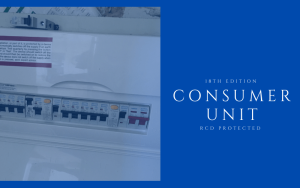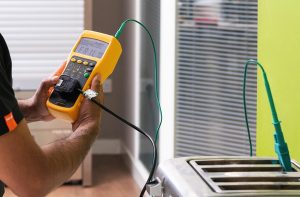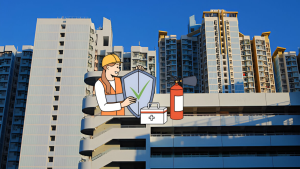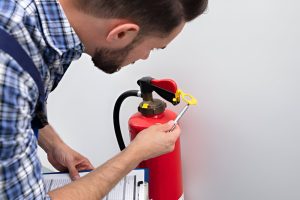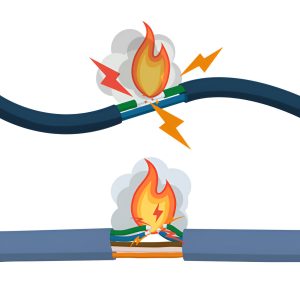In the United States, it is estimated that there are over 3,500 deaths and 16,000 injuries related to fires each year. Understanding the legal requirements surrounding fire risk assessments is essential for ensuring compliance and safety.

But, what exactly constitutes a fire risk assessment as a legal requirement? Let’s explore the intricacies and implications of this crucial aspect of fire safety to grasp its significance in protecting lives and property.
Legal Mandates for Fire Assessments
Legal mandates dictate that fire risk assessments are compulsory for all commercial premises and shared areas of domestic properties, as outlined in The Regulatory (Fire Safety) Reform Order 2005 in England and Wales.
The assessment criteria encompass evaluating potential fire hazards, determining the effectiveness of existing fire safety measures, assessing evacuation plans, and gauging the likelihood of fire incidents. Compliance checks ensure that all fire safety regulations are met, and risk mitigation strategies are put in place to minimize the chances of fire outbreaks.
Regular regulatory updates must be incorporated into the assessment process to stay abreast of changing laws and standards. The frequency of assessments varies but should be conducted regularly, especially after near misses, significant changes in the premises, or suspected irrelevance of the current assessment.
Responsible Person’s Duties
The focus now shifts to outlining the duties of the individual responsible for overseeing fire safety measures within a premises, emphasizing the proactive approach required to ensure compliance and safeguard occupants. As the Responsible Person, my main responsibilities encompass risk mitigation, compliance measures, safety protocols, liability concerns, and emergency planning.
| Duties | Description |
|---|---|
| Risk Mitigation | Identifying potential fire hazards and taking steps to minimize these risks through proactive measures. |
| Compliance Measures | Ensuring adherence to all legal requirements and standards to guarantee the safety of occupants. |
| Safety Protocols | Implementing and maintaining necessary safety protocols to protect individuals in the event of a fire. |
| Liability Concerns | Understanding and addressing potential liability issues related to fire safety within the premises. |
| Emergency Planning | Developing comprehensive emergency plans and procedures to effectively respond to fire incidents. |
In fulfilling these duties, a proactive and informed approach is crucial to maintain a safe environment and meet legal obligations effectively.
Process of Conducting Assessments
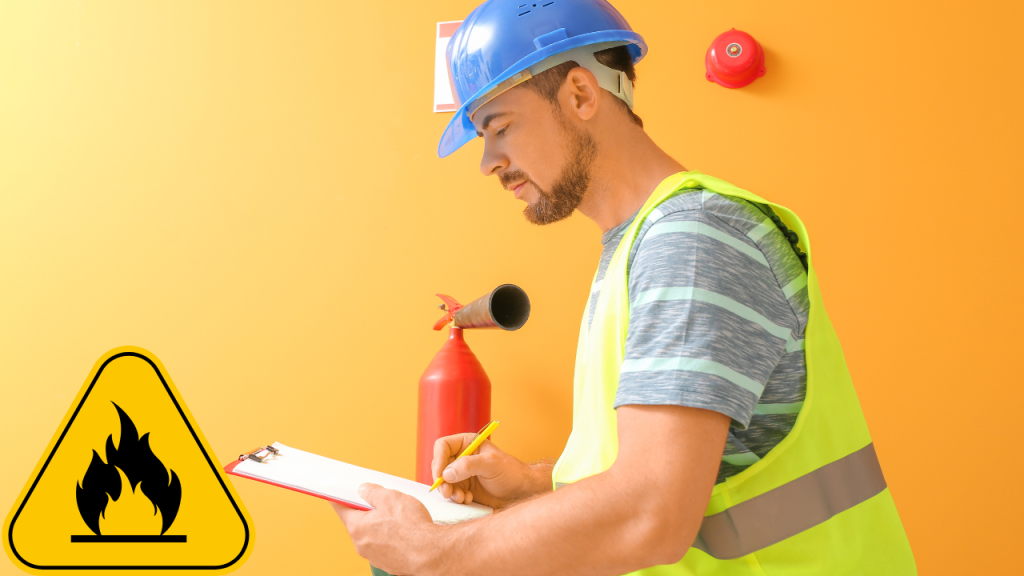
When conducting fire risk assessments, the initial step involves thoroughly examining the premises for potential fire hazards and risks. Utilizing innovative assessment methods is crucial to identify fire hazards effectively. Assessors should evaluate existing safety measures, such as fire detection systems and emergency lighting, to ensure they meet current standards. Evacuation plans must be meticulously assessed for their effectiveness in safely evacuating occupants during a fire emergency.
Understanding the likelihood of fire occurrences and workplace hazards is essential in determining the level of risk present in the environment. Analyzing workplace hazards, including materials stored, personnel shifts, and building layout alterations, helps in quantifying risks accurately. Implementing necessary fire safety improvements based on the assessment findings is imperative to mitigate potential dangers.
Regular reviews of the assessment, recommended annually, are vital to adapt to changes in the premises or activities. The Responsible Person must ensure that the assessment is up to date, reflecting any modifications that could impact fire safety measures.
Guidelines for Reviewing Assessments
Upon analyzing workplace hazards and determining potential risks, it becomes imperative to establish clear guidelines for the regular review of fire risk assessments to ensure ongoing safety compliance.
Assessment frequency is a key aspect to consider, with annual reviews being recommended to maintain up-to-date safety standards. The review process should involve a thorough examination of any changes in premises or activities that could impact fire risks, prompting updates as necessary.
Assessment criteria should encompass identifying new hazards, evaluating the effectiveness of current safety measures, and proposing improvements to enhance fire safety. Documentation requirements are essential, mandating detailed records of assessment findings, updates, and any implemented changes.
Additionally, training needs should be identified and addressed to ensure that employees are equipped to handle fire emergencies effectively. By adhering to these guidelines, businesses can proactively manage fire risks, prioritize safety, and comply with regulatory standards effectively.
Factors Prompting Assessment Review
In considering factors that prompt the review of fire risk assessments, a vigilant approach to identifying changes in various aspects of premises and activities is essential. Regularly reviewing assessments ensures that safety measures are up to date and compliant with regulations. Factors influencing the need for assessment reviews include changes in materials stored, shifts in personnel or usage, deteriorating building conditions, alterations in building layout or use, changes in control of premises, and general wear and tear affecting fire safety. Even minor changes like IT system upgrades can impact fire hazards and necessitate a reassessment of risks. By staying proactive and responsive to these factors, the risk of potential fire incidents can be minimized, ensuring a safe environment for occupants and maintaining compliance with fire safety regulations.
| Risk Assessment | Building Changes | Safety Measures |
|---|---|---|
| Regular Updates | Layout Alterations | Compliance Checks |
| Material Changes | Control Shifts | Emergency Procedures |
| Personnel Changes | Deterioration | Fire Prevention Systems |
| Environmental Impact | Wear and Tear | Evacuation Plans |
| Technological Upgrades | Compliance Updates | Hazard Identification |
Penalties for Non-compliance
Considering the critical importance of maintaining compliance with fire safety regulations, understanding the potential penalties for non-compliance is imperative.
Failure to adhere to fire risk assessment requirements can result in severe consequences. Regulatory fines may be imposed for non-compliance, with enforcement measures ensuring that responsible parties face legal repercussions.
These penalties extend beyond monetary fines and can include endangering occupants due to neglecting necessary safety measures, impacting insurance coverage, and causing reputational damage to the business. Non-adherence penalties are in place to enforce the seriousness of fire safety regulations and to emphasize the importance of conducting thorough assessments to mitigate risks effectively.
It’s crucial for all responsible individuals to recognize the gravity of non-compliance and take proactive steps to ensure that fire risk assessments are conducted regularly, accurately, and in accordance with legal requirements to avoid facing these detrimental consequences.
Frequently Asked Questions
Are There Any Specific Qualifications or Certifications Required for a Person to Conduct a Fire Risk Assessment?
Having the right qualifications and certifications is crucial for conducting a fire risk assessment. Proper training, experience, and competency ensure a thorough evaluation. These factors contribute to effective risk mitigation and compliance with standards.
What Are Some Common Misconceptions or Myths About Fire Risk Assessments That People Should Be Aware Of?
Common misconceptions about fire risk assessments include overlooking the importance of regular reviews, assuming all risks can be prevented, neglecting emergency planning, and underestimating the need for proactive fire safety measures to minimize potential hazards.
How Can Businesses Ensure That Their Fire Risk Assessment Is Tailored to Their Specific Industry or Type of Premises?
Ensuring a tailored fire risk assessment involves considering industry-specific factors, identifying premises-specific hazards, customizing mitigation strategies, providing specialized training, and developing tailored emergency response plans. Adapting assessments to unique needs enhances overall fire safety measures.
Is There a Specific Format or Template That Should Be Used When Documenting the Findings of a Fire Risk Assessment?
When conducting a risk assessment, documentation plays a crucial role in ensuring legal compliance. Templates offer flexibility for capturing findings, analyzing data, and planning actions. Customization to industry specifics enhances the effectiveness of assessments.
What Are Some Innovative Technologies or Tools That Can Assist in Conducting More Thorough and Effective Fire Risk Assessments?
Drone technology enhances aerial assessments, virtual reality aids in simulation training, and artificial intelligence analyzes data for risk prediction. IoT sensors monitor real-time conditions, while thermal imaging detects hidden hazards, collectively improving fire risk evaluations.
Conclusion
In conclusion, fire risk assessments aren’t just a best practice, but a legal requirement in ensuring the safety of individuals and compliance with regulations.
Understanding the legal mandates, responsibilities of the responsible person, and the process of conducting assessments is crucial for safeguarding lives and property.
Non-compliance with fire risk assessment requirements can result in severe penalties, underscoring the importance of adhering to these regulations for the overall safety of all premises.



